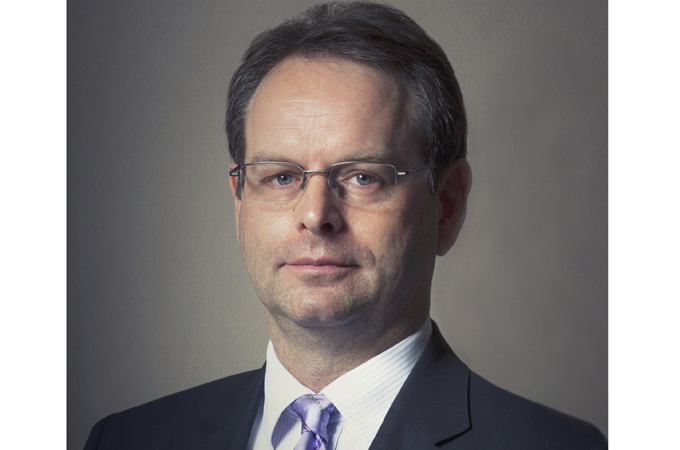Summer 2015
Tomorrow’s cars and the safety technologies they employ hold a great deal of promise for investors, as Citi Private Bank’s Philip Watson explains to Arabian Knight
In the cult early 1980s television series Knight Rider, the crime-fighting hero character sped between adventures in a car straight out of the realms of science fiction. KITT – a Pontiac Trans Am with artificial intelligence – was able to drive itself, assess its passengers’ health, and talk to its driver about any subject in a soothing robotic voice, all while running highly efficiently on a selection of different fuels.
Three decades later, many of the technologies imagined by the show’s creators are already on the roads. Certain cars can park themselves neatly in the tightest of spaces, detect when their driver is getting drowsy, have hybrid engines, and connect to the worldwide web. And, according to Philip Watson, Head of Citi Private Bank’s Global Investment Lab, today’s visions of the future are unlikely to take another 30 years to materialise.
“The ongoing transformation of the automotive industry stands to deliver huge benefits to society,” says Watson. “Travelling by road should become safer, quicker, more comfortable and friendlier to the environment. And the changes that we envisage could potentially be an opportunity for investors too. It’s a theme that we call ‘Cars of the Future’.”
Watson highlights estimates from analysts at Citi Research, which suggest that some of the industry’s most important new applications and products could grow on a compound annualised basis at upwards of 20 per cent a year. By comparison, the global automotive industry as a whole may only grow at four per cent a year over the same period.
SAFETY FOCUS
“One of our key areas of investment focus is car safety,” says Watson. “In 2013, there were 5.5 million crashes on US roads alone, of which 93 per cent were thought to have been caused by human error. The human costs of this are enormous, with more than 32,000 lives lost. And the costs of motor accidents are put at more than $300 billion a year or two per cent of the value of the entire US economy. Much of this could be prevented, though. It’s been said that 60 per cent of crashes could be avoided or mitigated if drivers had just half a second more in which to react.”
“Advanced Driving Assistance Systems (ADAS) are enhancements to a vehicle that seek to avert accidents by detecting blind-spot and collision hazards, as well as driver error, drowsiness and even intoxication,” continues Watson. “To do so, ADAS uses technologies including cameras, laser and milliwave radars, and ultrasound sensors.”
“Having identified a potential danger, ADAS can then take action. This could be preventing a car from starting if the driver is under the influence of alcohol, vibrating the seat if the car begins to drift dangerously between lanes, and even taking over the driving.”
Watson believes that besides improving levels of safety, ADAS could also play a role in fuel economy and therefore in lowering carbon emissions. “Adaptive Cruise Control technology regulates a car’s speed automatically, based on the speed of the car in front. This is clearly useful for preventing accidents, but it can also help save fuel and the environment too.”
Given the scope for improving road safety, the authorities are actively encouraging the adoption of ADAS by carmakers. “From 2017, the EU-backed European New Car Assessment Programme will require vehicles to incorporate ADAS in order to be considered for its four-star rating,” says Watson. “Insurers are also keen on ADAS and have a clear incentive to offer lower premiums to drivers of ADAS-equipped vehicles.
“Another important driver of future ADAS growth is the appetite of consumers for lower fuel and insurance costs, as well as for a safer ride. There have already been studies showing that drivers may be willing to pay substantially more for cars with ADAS.”
While Watson thinks that the market for ADAS as a whole could well see compound annual growth of 20 per cent or more to the end of this decade, he believes some segments within it might do better still.
“Take forward-looking monocular cameras, which help spot collision risks ahead,” says Watson. “Citi Research estimates that these could enjoy yearly growth closer to 60 per cent over the same period, much of that coming in the later years from 2017.”
“From an investment standpoint, the challenge is to identify potential opportunities that offer suitable exposure to the projected growth of ADAS and to the key areas within our Cars of the Future theme more generally. Safety is one of these and includes ADAS, along with propulsion and connectivity. Propulsion encompasses fuel-efficiency and emissions technologies, as well as hybrid and electric cars. Connectivity, meanwhile, includes the likes of navigation, telematics, and ‘infotainment’ systems.”
In Watson’s view, forecasts of rapid market growth are not enough on their own to make a case for investing. “We think it’s essential to consider possible returns based on valuations, while also taking into account other things like stock-price momentum and volatility.”
“Our own approach to investing here typically stresses spreading risks. Although buying the stock of an individual firm involved in this area can be very rewarding if the right choice is made, it is also riskier. A key lesson of stock-market history is that firms that show early leadership in a new technology don’t always live up to their initial promise.”
“As a result, we look for potential opportunities that are diversified across various companies in the field,” says Watson. “With a basket of individual stocks or an investment based on such a basket, an investor’s capital is still at risk, but the risks are more spread.”
“We are very positive about the outlook for Cars of the Future,” says Watson. “For investors, this theme could have much more mileage than just the near future. Our view is that the next five years could potentially see more advances in the automotive industry than there have been in the last forty. The vision of a fully self-driving car could be realised sooner than some people may think.”



















